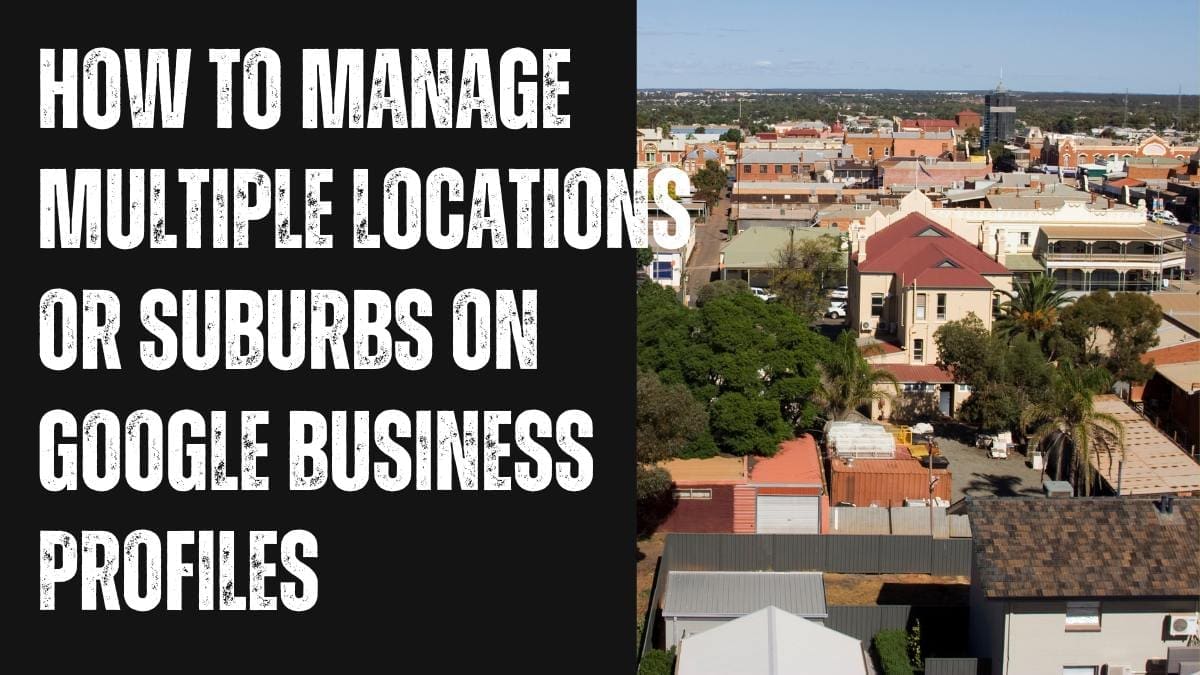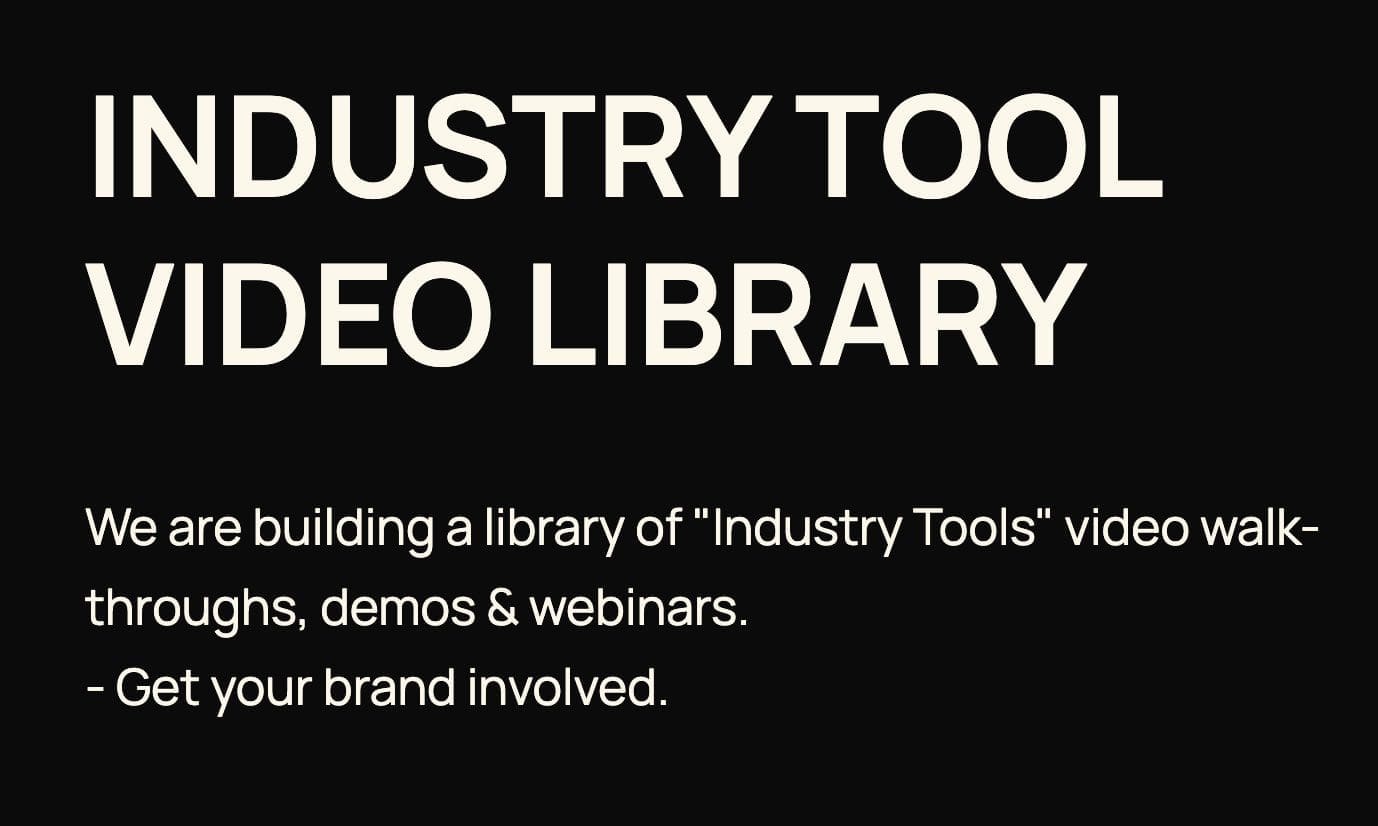AI Learning Centres:
- AI – Learn The Basics
- Get The Most From ChatGPT
- Branding in The Age of AI
- AI for Client Experience
- AI For Prospecting
- AI For Marketing
- AI For Listings & Ads
- Team Adoption of AI
- AI For PM
- AIO & Generative Search
- AI For Operations & Efficiency
- AI For Market Research & Analysis
- AI Ethics, Privacy & Compliance in Real Estate
Digital Marketing & Social Media Learning Centres:
Guides & Downloads

How to Manage Multiple Locations or Suburbs on Google Business Profiles
Managing more than one location or suburb on Google Business Profiles can feel big at first. With a clear setup and a simple weekly rhythm, it becomes easy. This guide shows you how to organise your profiles so that sellers and buyers in each suburb can find you fast, see proof, and contact the right team member in seconds.
Why multiple locations matter
If your agency serves more than one suburb or has more than one office, separate profiles help you show up in local search for each area. This gives you more map pins, more chances to appear in the Local Pack, and stronger local trust.
Key benefits
• Show up for suburb name searches like real estate agent in Mosman or property management in Parramatta
• Display the correct phone number and hours for each office or service area
• Share hyper local photos, posts, and reviews that match the suburb
• Track enquiries and results by location so you can invest where it works
Choose the right profile type for each place
Google lets you set up two main types.
• Storefront locations
A physical office where people can walk in during set hours. Use this if you have a branch with signage and staff on site.
• Service area locations
You visit clients and do not serve walk ins at that address. For example, a team that covers inspections across a region. Hide your street address and list suburbs served.
Tip
If you have an office and also cover wider suburbs, set the office as a storefront and list service areas around it.
Build a clean foundation before you scale
Get the basics right once, then reuse them for every location.
• One master email to own all profiles
• Use Location Groups in Google Business Profile Manager to keep offices together
• One format for names, addresses, phone numbers and website links
• One photo style guide so your brand looks consistent
• A shared folder for each location with logo files, team photos, office photos and suburb photos
Name format idea
• ABC Real Estate Mosman
Only add the suburb if your real world signage or business registration supports it. Keep names clean. No slogans or keywords.
Step by step setup for each new location
Follow these steps in order. Repeat for every office or service area.
Create or claim the location
• Open Google Business Profile Manager
• Add a new location in your Location Group
• Choose the main category Real Estate Agency or Property Management Company
• Add extra categories that match your services like Real Estate Consultant or Auction HouseAddress and service areas
• Storefront
Enter the full street address and place the pin exactly on your door
• Service area
Hide the street address and list the suburbs you serveContact details
• Phone number that rings the local team
• Appointment link to a suburb landing page with a simple enquiry form
• Shortname or profile handle that is easy to readHours and special hours
• Set normal hours and add public holiday hours
• Use More hours for special cases like Saturday auctions drop inAttributes
• Wheelchair accessible entrance
• Appointment required if you do not take walk ins
• Languages spoken if helpful in your suburbBusiness description
• Write a unique 750 character description for the suburb
• Mention key streets, schools, and property types you handle
• Add a clear call to action like Call our Mosman team for a free price updatePhotos and videos
• Exterior and interior of the office
• Team headshots for this location
• Local landmarks and streets to prove you are truly local
• Short videos that show listings, auctions and client momentsProducts and services
• Add services like Sales Appraisals, Property Management, Auction Services
• Add simple one line explanations for eachOpening verification
• Complete postcard, phone or video verification
• Do not edit the name or address during verification
Create suburb landing pages on your website
Each profile should point to a matching suburb page on your site. This builds trust and improves rankings.
What each suburb page needs
• Clear suburb name in the heading and title
• Local office address and phone
• A short suburb market overview
• Recent sales and current listings in that suburb
• Top three testimonials from local clients
• A fast enquiry form with suburb prefilled
• A map embed centred on your office or the suburb
Link tracking
• Add UTM tags to the Website and Appointment links so you can see results in analytics
• Example
utm source is google
utm medium is organic
utm campaign is gbp mosman
Keep NAP consistent across the web
NAP means Name, Address, Phone. Consistency is vital.
• Make sure your name, address and phone match your site and your signage
• Update the same details in directories you use
• Use the same spelling for street names and suburbs
• Check ABN records and contracts match your public details
Avoid duplicates and profile conflicts
Duplicates hurt rankings and confuse clients.
• Search for your brand and address on Google Maps to find old listings
• Close or merge duplicates through Google support
• Do not create a new profile if you only want to change the phone or hours
• If you move offices, update the existing profile instead of creating a new one
Posting and content plan by suburb
Posts should be local, helpful and frequent. Aim for two to three posts per week for each active suburb.
Content ideas
• New listings with suburb in the title
• Just sold with price guidance if allowed
• Weekly market wrap for that suburb
• School zones, parks, and transport tips
• Auction day highlights with short video
Posting checklist
• Use a clear headline with the suburb
• One strong photo or a short video
• One clear call to action like Book a price check
• Link to the matching suburb page or listing page
Reviews by location
Reviews are the fastest way to build trust in each suburb. Treat each profile as its own reputation hub.
• Send review requests that point to the right location link
• Ask sellers and buyers to name the suburb and the team member who helped
• Reply to every review within two days
• Thank positive reviewers and mention the suburb again
• For issues, move the chat to a call, then add a calm public reply
Monthly review goals
• At least five new reviews per active location
• Aim for balanced reviews across sales and property management
Q and A for each suburb
Q and A can win quick enquiries if you guide it.
• Seed common questions and answer them yourself
• Example
Do you offer free appraisals in Mosman
Yes. Our Mosman team offers free price updates and rental assessments
• Set alerts so you reply fast to public questions
• Keep answers short and friendly with one call to action
Messaging and calls
Make it easy to talk to the right person.
• Turn on messaging and set a simple auto reply that names the suburb
• Use a local phone number if possible
• If you use call tracking, forward to the local team and keep the number stable long term
• Log all calls and messages into your CRM with the suburb tag
Photos that prove local expertise
Google and clients love fresh local photos. Build a simple routine.
• Office exterior with clear signage
• Team at local events or auctions
• Streets, cafes and parks that locals know
• Before and after photos of styled homes
• Short clips of open homes and auction moments
Photo tips
• Use bright daylight where possible
• Keep brand colours consistent
• Rename files with the suburb and topic before upload
Reporting and insights for multi location teams
Use Google Business Profile Insights to see what is working in each suburb.
Track monthly per location
• Views and searches
• Calls, messages and direction requests
• Website and appointment clicks
• Popular times and photo views
Turn insights into actions
• Boost posts and photos in suburbs with strong views but low calls
• Increase reviews in suburbs where competitors have more ratings
• Adjust hours where search demand is high outside normal times
Bulk management to save time
When you manage many suburbs or branches, use bulk tools.
• Location Groups keep teams and profiles tidy
• Bulk upload with a spreadsheet for hours, services, and links
• Use one photo day per month to capture updates for all locations
• Create a shared content calendar so every suburb gets steady posts
Team roles and access
Control who can edit which profiles.
• Primary owner should be a secure master email that the business controls
• Managers can post, reply to reviews and update hours
• Limit access to only the locations each person needs
• Remove old staff as soon as they leave
Local compliance and trust signals
Make sure real world details match what clients see online.
• Use the exact legal trading name where required
• Keep ABN or business registration details up to date on your site
• Make sure office signage matches your profile name
• Show your licence details on suburb pages if your state requires it
Common mistakes and how to fix them
• One profile trying to cover many suburbs
Create separate profiles or add service areas and build suburb pages
• Wrong phone or hours
Audit details every quarter and after any staff or roster change
• Thin descriptions
Write unique descriptions with suburb landmarks and property types
• No reviews on new locations
Set a monthly target and build a simple review request flow
• Posts that are not local
Use suburb names in titles and photos that look local
A simple weekly rhythm for success
Keep it light and consistent. Small actions add up.
• Monday
Check messages and Q and A for each location
• Tuesday
Post one local update per active suburb
• Wednesday
Request three reviews for each location
• Thursday
Upload two fresh photos per location
• Friday
Check Insights and note wins and gaps
• End of month
Update hours and special hours
• Quarterly
Audit NAP details and remove old users
Quick launch checklist
• Location Group created
• Name, address, phone and website match across all places
• Unique description, photos and posts per suburb
• Suburb landing page with enquiry form and map
• Reviews requested and replies set
• Messaging on and monitored
• Insights reviewed with a monthly plan
Multiple locations on Google Business Profiles work best when each one feels truly local. Set the structure once, keep details correct, and deliver steady local proof. When each suburb has its own photos, posts, reviews and landing page, you will rank higher, get more calls, and make it easier for people to choose your team.
Author – Ken Hobson






